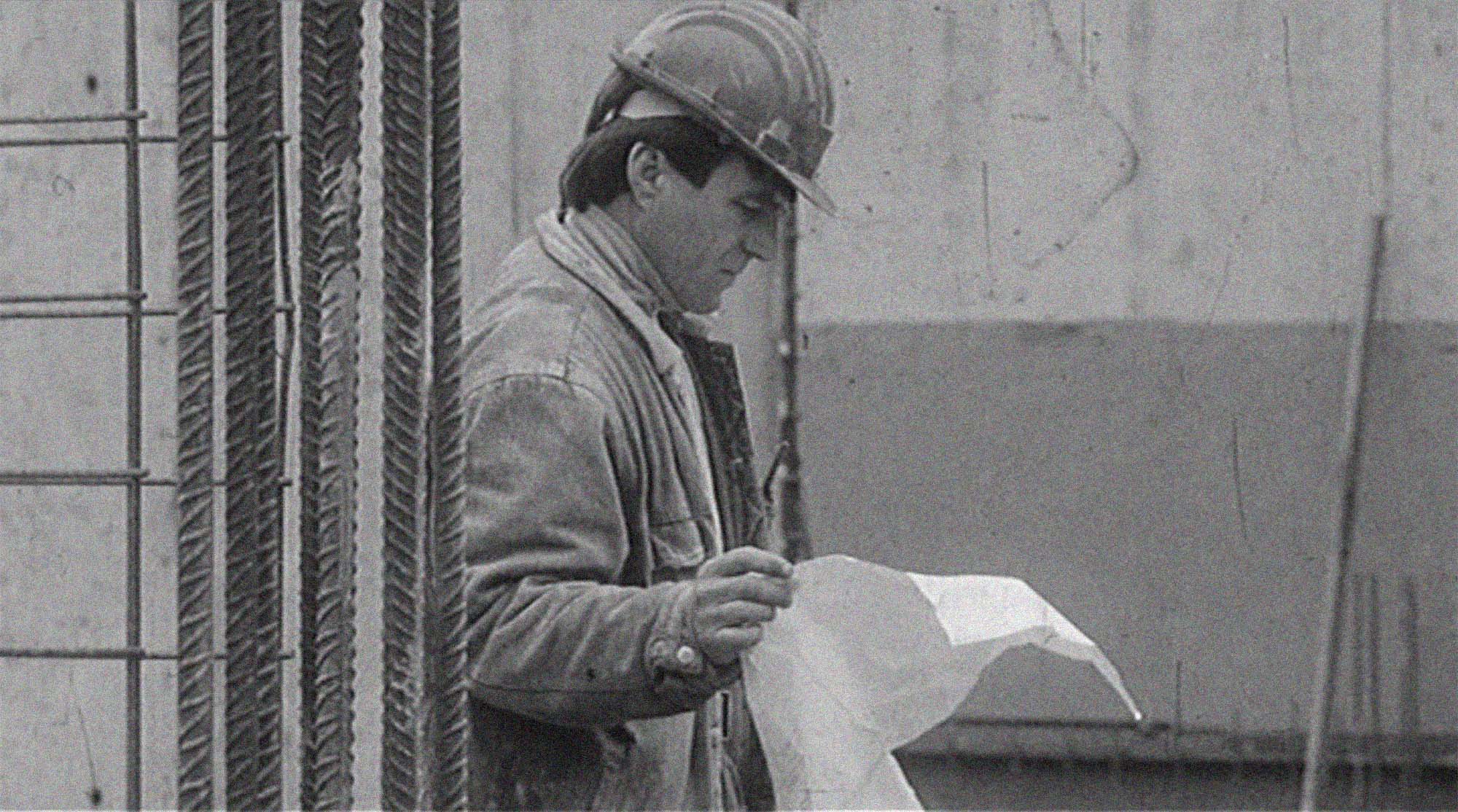
For the Open Day in the Hallenbau, the cinema in the Blauer Salon is showing a short film program by HfG students. From 11 a.m. to 5 p.m., we will keep the doors of the Blauer Salon open continuously and project a large crossover program of in-house short films. We will be mixing works by currently enrolled directors with the works of legendary former students. Everything is included: from the symbolic laying of the HfG foundation stone to 90s trash aesthetics, essay and animated films to dramatic miniatures. Take your imaginary cotton candy with you to our fairground cinema and let yourself be intoxicated by the diversity of a three-decade creative period.
Medienuniversität der Zukunft – Eröffnung der Hochschule für Gestaltung in Karlsruhe
The Karlsruhe University of Arts opened in Grünwinkel in 1992. The later HfG professor Stephan Krass was there for SWR. When Krass filmed a short report on the opening of the HfG for the culture magazine Bizz in 1992, he probably had no idea that a few years later he would be teaching at the same university himself - which had since moved to the former IWKA factory building.

Der Tag an dem Leo einen Glückspfennig fand
A movie about spontaneous decisions in everyday life. The structure of the film, which consists of two versions shot in one go, is interesting. An unconventional piece of HfG film history. According to the blurb, the structure of the film, which consists of two versions shot in one go, is interesting. One "normal" and one "nonsense". At times, however, the suspicion arises that there was a general desire to shoot the latter, regardless of the version. This movie is highly recommended for all those who like to eat cat food, love mopeds and drink washing-up liquid.

Pong
The two-dimensional ball from Pong - the mother of all video games - steals into the three-dimensional space of the HfG and wreaks all kinds of havoc there - an animated snapshot of the HfG from 2005. In their stop-motion film, Annabel Angus, Jens Gerstenecker, Patrick Hilss and Katrin Uecker capture a piece of the HfG, probably without knowing it. The white ball leads us through the HfG, we see people that most people will no longer know. Some of them are probably already dead, but on this beautiful summer's day in 2005 they were probably glad that the dull university job was once again being disturbed by the cheeky jokes of the students!

Kneecam No. 1
What can we say... It's the Techno Viking! But what does it have to do with the HfG, some may ask. The answer is just a click away.

Am Strand – Die Nackten und die Verdammten
Sometime in the future: Humanity is at an end, the damned drag their dying bodies to the seas in the hope of finding healing there. The beaches have become cemeteries. Androids are blamed for the downfall of humanity, and hunters are sent out to destroy them. On one of the cemetery beaches, a huntress and a gravedigger fight over an android boy. The short film is set in a bleak future: Humanity is at an end, the damned drag their dying bodies to the seas in the hope of finding healing there. The beaches have become graveyards. Androids are blamed for the downfall of humanity, and hunters are sent out to destroy them. On one of the graveyard beaches, a huntress and a gravedigger fight over an android boy.

Guided Tour
In 2008 - at the height of the financial crisis - the then Federal President Horst Köhler visits the HfG. There he was given an exclusive guided tour by Peter Weibel and Peter Sloterdijk... A guided tour could hardly be more educational, as you have the opportunity to look over the shoulders of intellectual greats such as Peter Sloterdijk and Peter Weibel. The then Federal President visits the HfG; its student René Frölke captured in concentrated black and white how the improvised media art discourse of the aforementioned gentlemen is colored by the longing for reflection on the real economy.

Kammerflimmer Kollektief – Nachtwache, 15. September
A music video for the Karlsruhe band Kammerflimmer Kollektief: a nocturnal ramble through the city and a look into the windows of others. It's no secret that Kammerflimmer Kollektief and Bernd Schoch are close: they contributed the music to some of his films, most recently to Olanda, which won the dokKa Prize of the City of Karlsruhe in 2019. In return, Bernd Schoch gave them this music video, which, after a long drive through the dark night, finally discovers the band in one of the many windows and sits down in front of it.

Baustelle
A view of a building site in Karlsruhe, the city of building sites. The so-called "observations" have been produced at the HfG since 2009. Professor Thomas Heise introduced this exercise, in which two formal requirements shaped the films: everyone was assigned a roll of 16mm film (approx. 11 minutes) and had to observe something. No sound was recorded and the films were developed by hand in a chemical bucket. Since 2009, the so-called “Observations” have been created at the HfG. Professor Thomas Heise introduced this exercise, in which two formal requirements shaped the films: Each participant was assigned a roll of 16mm film (approx. 11 minutes) and had to observe something. No sound was recorded, and the films were developed by hand in a chemical bucket.

